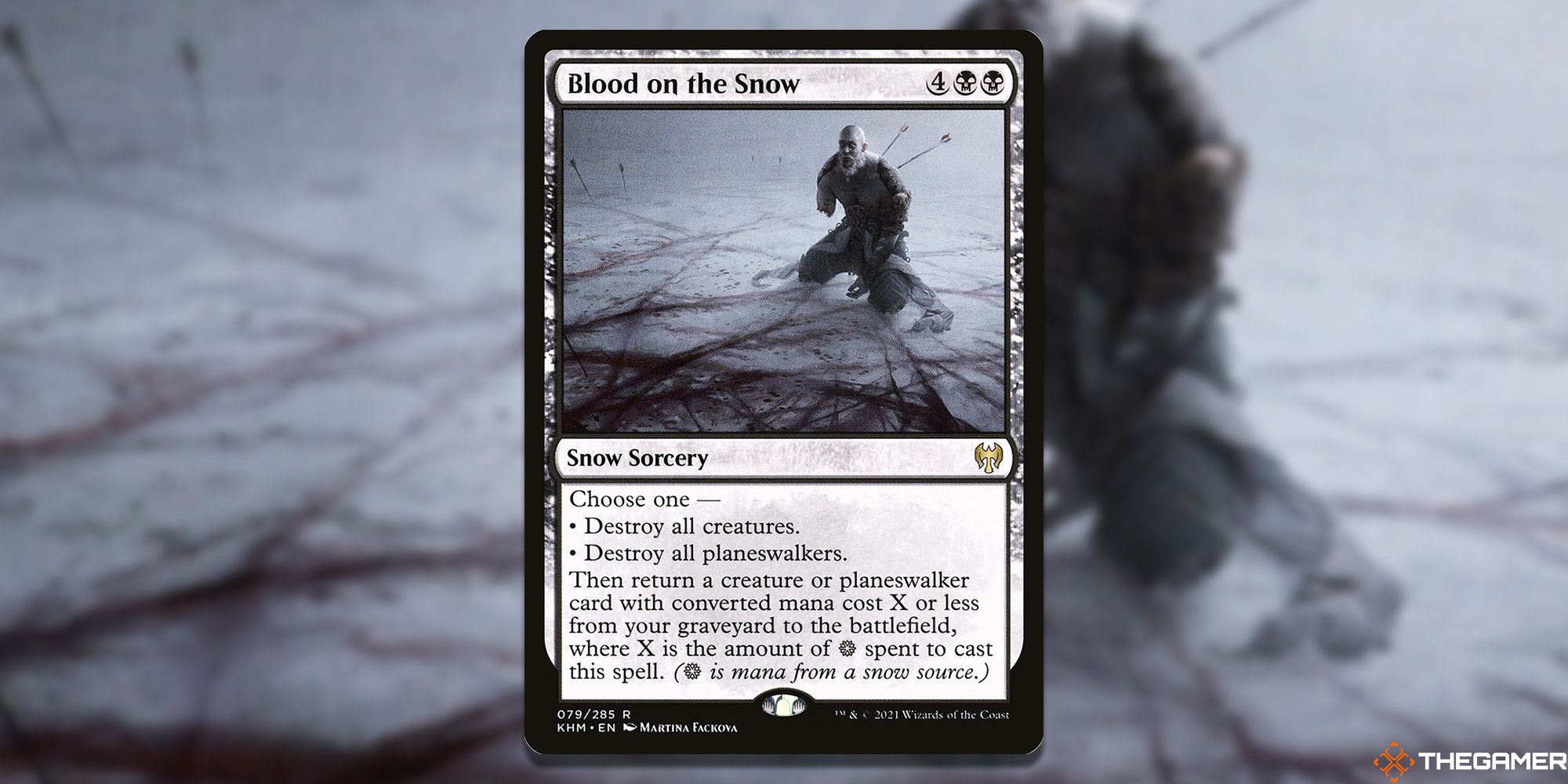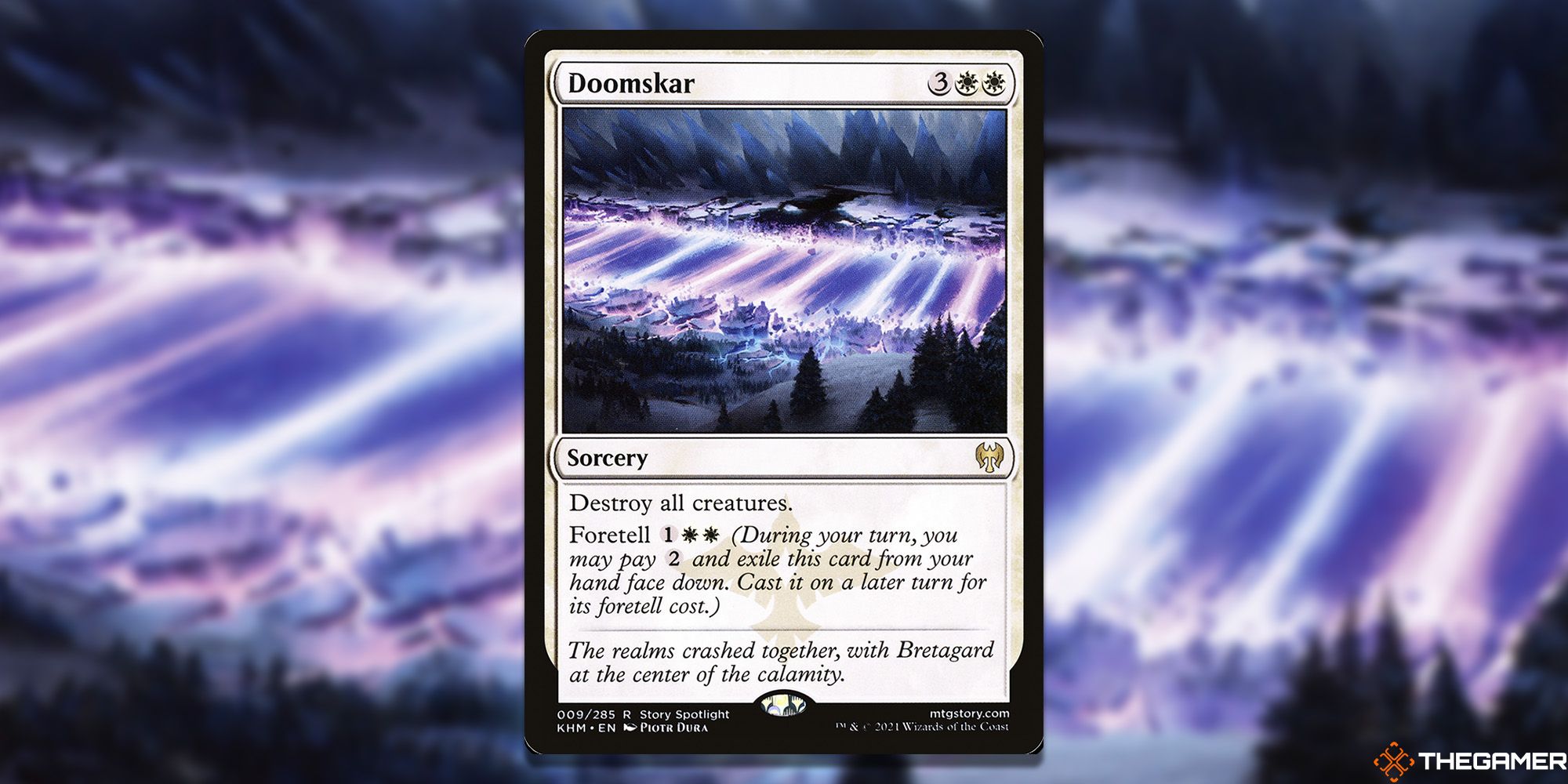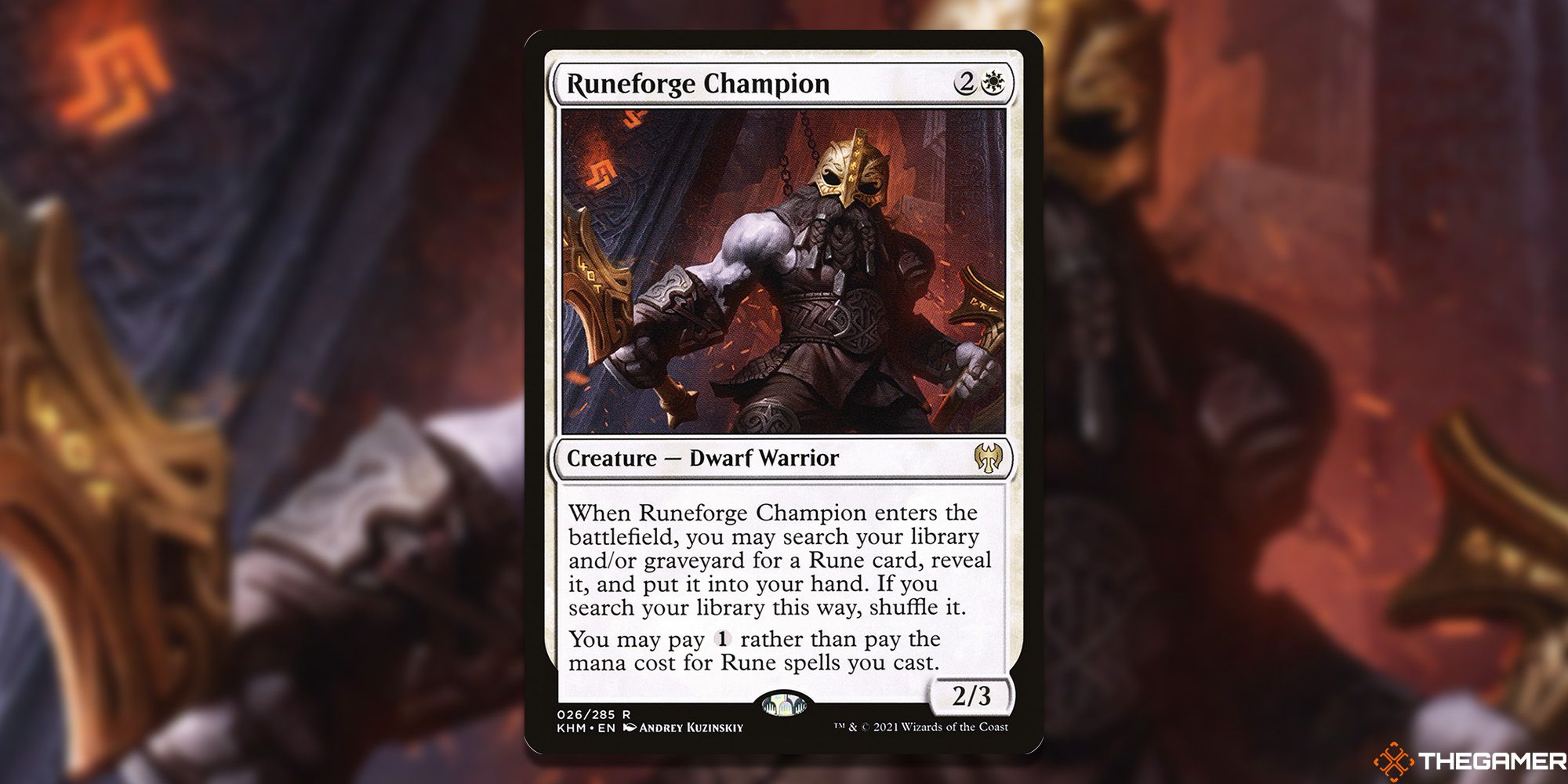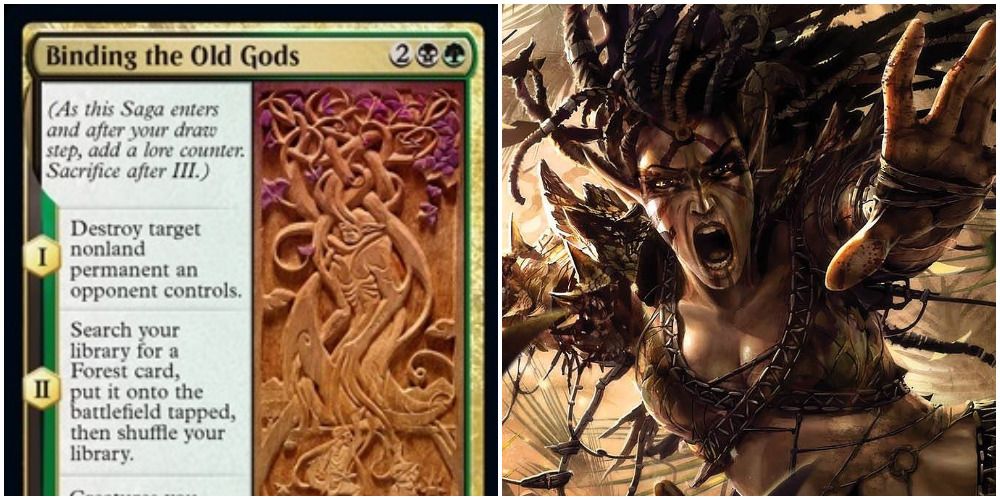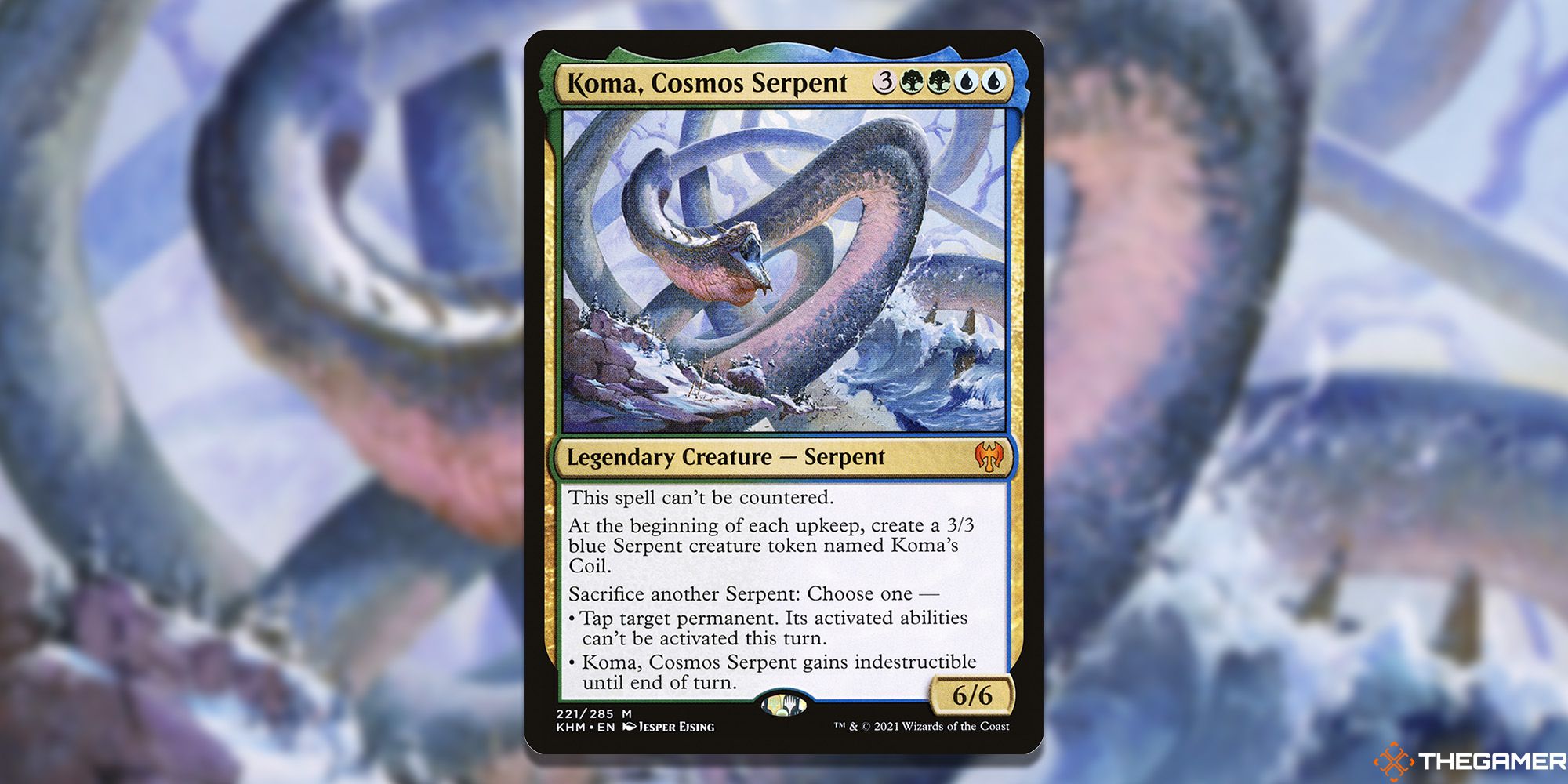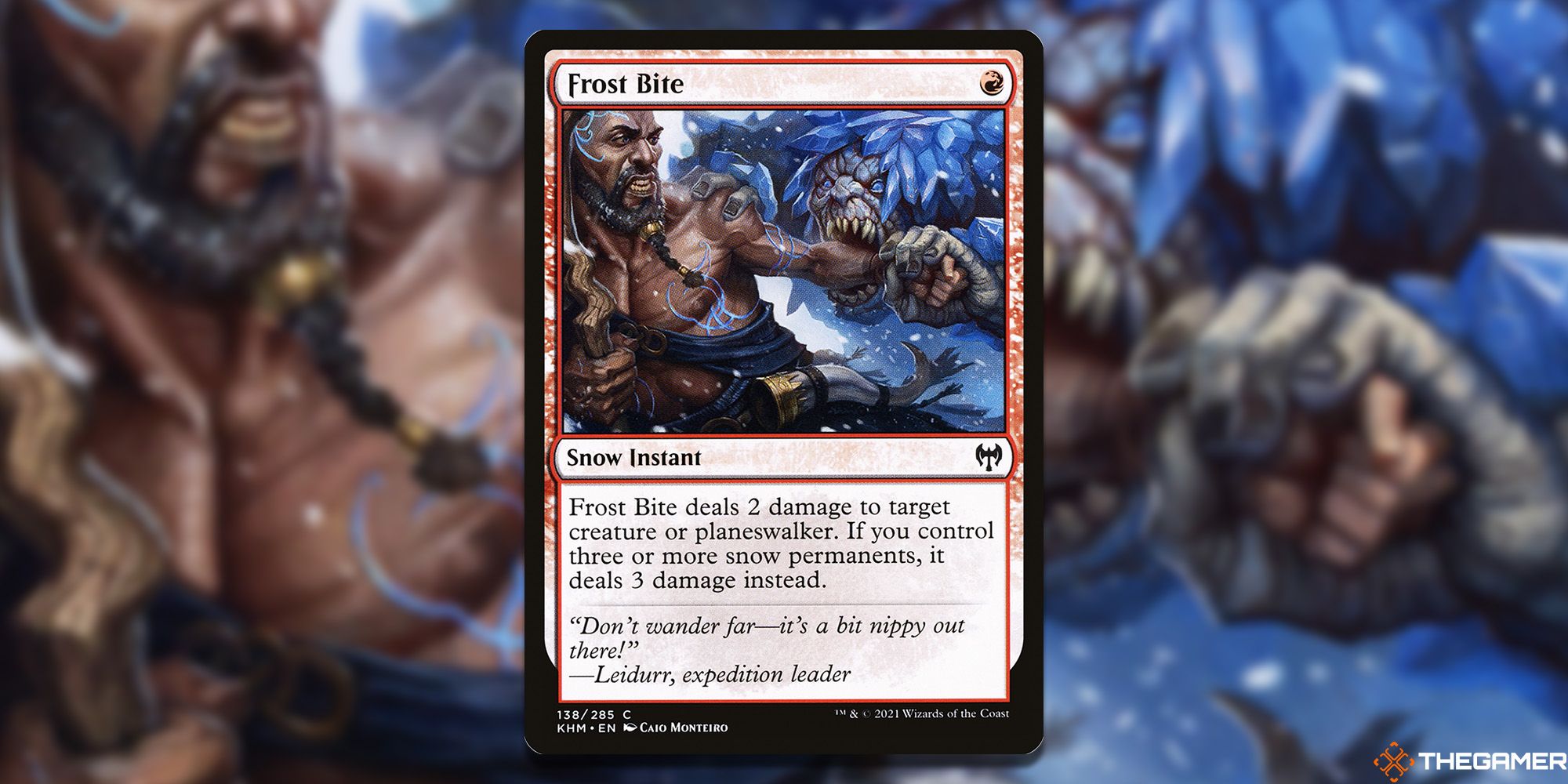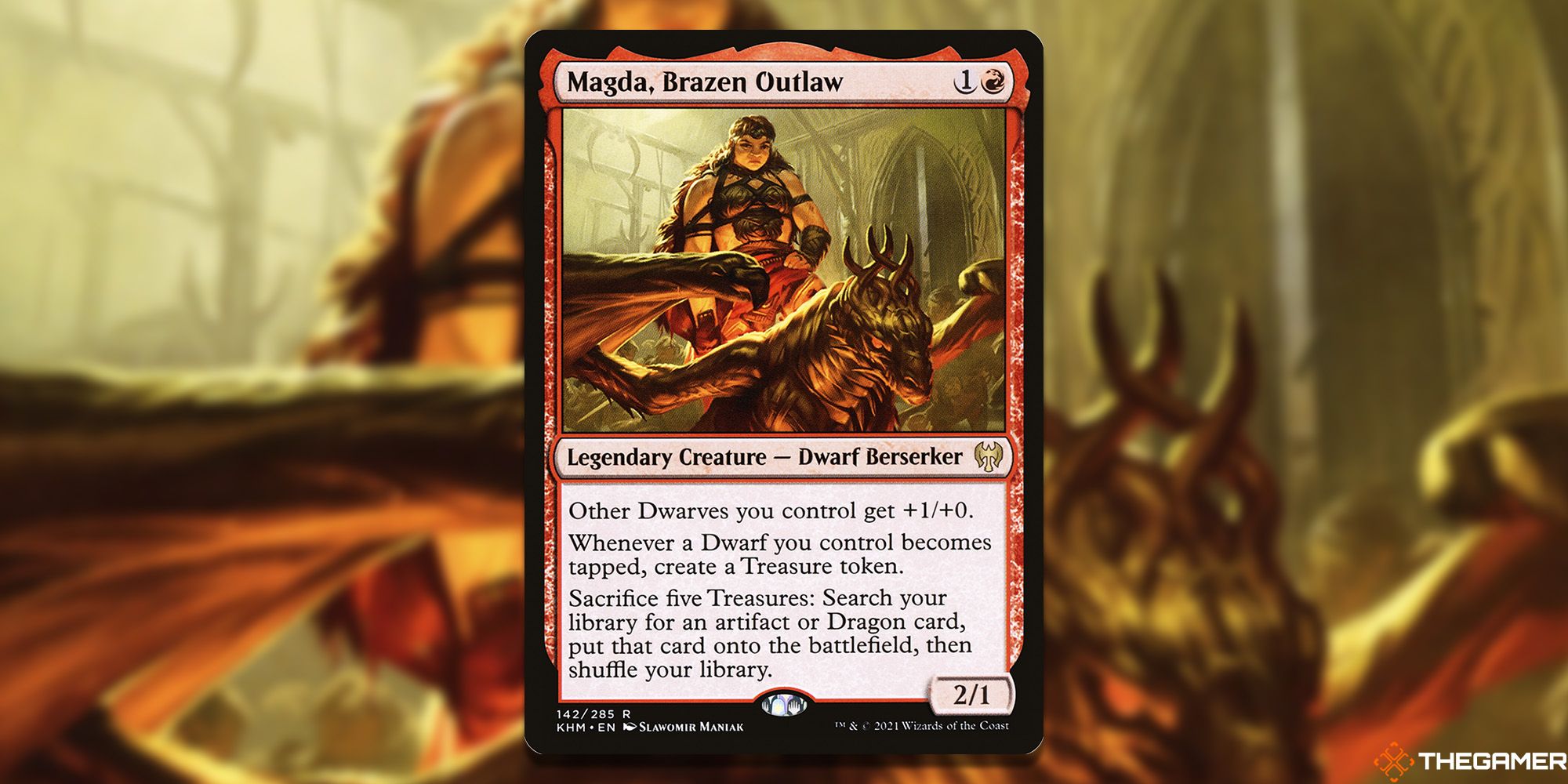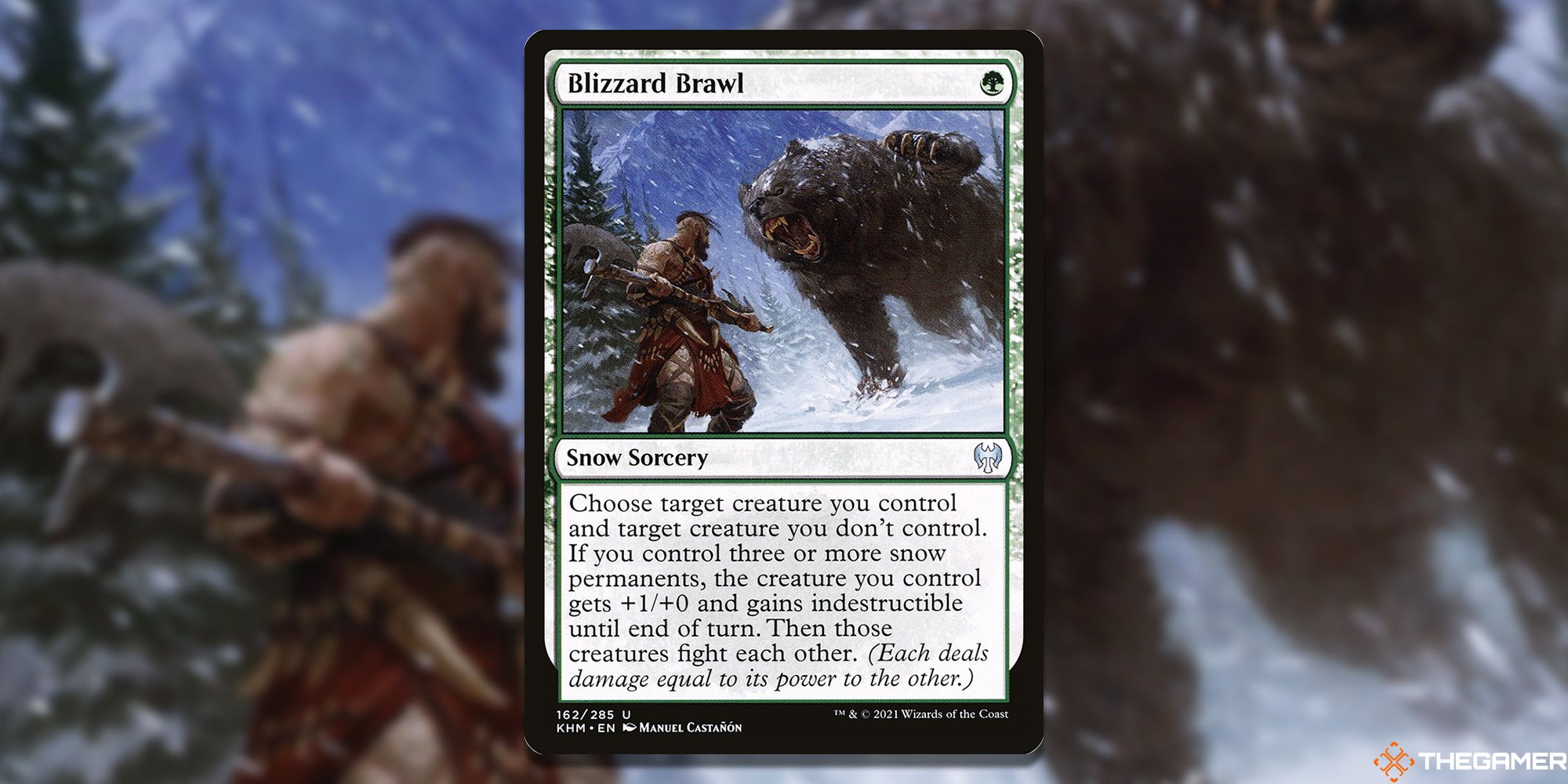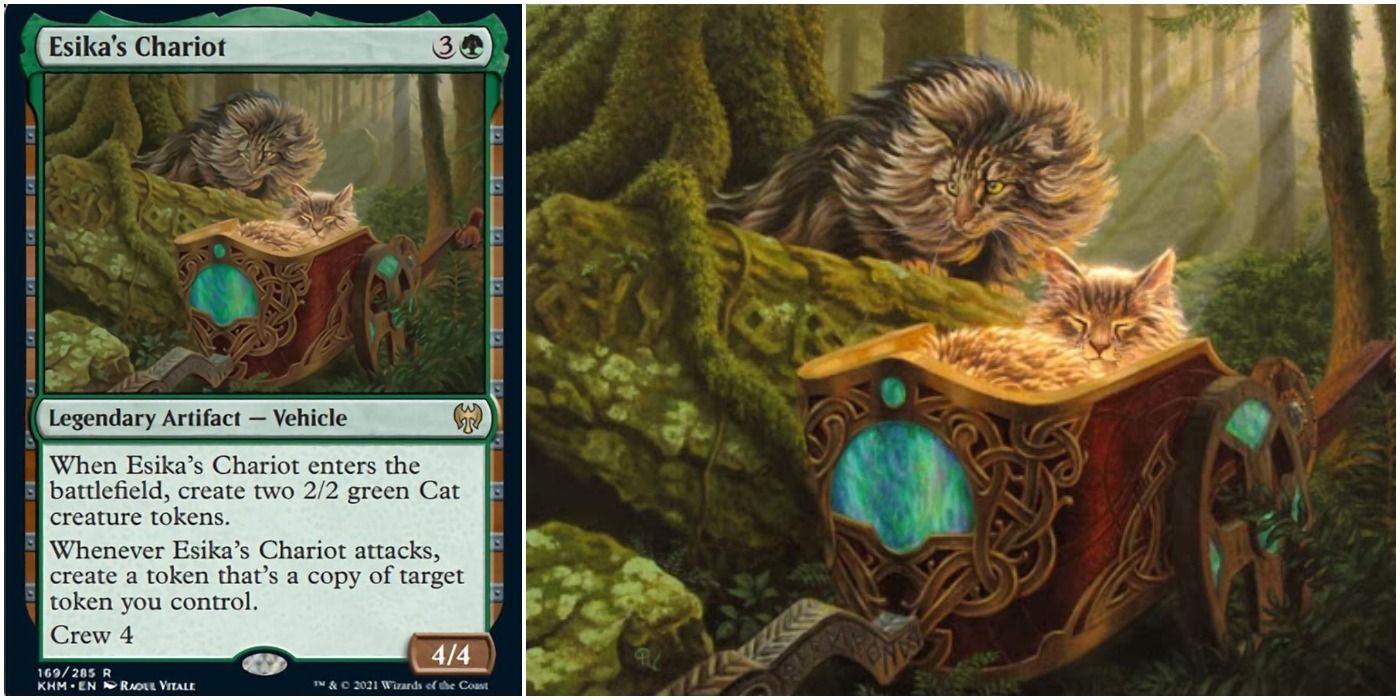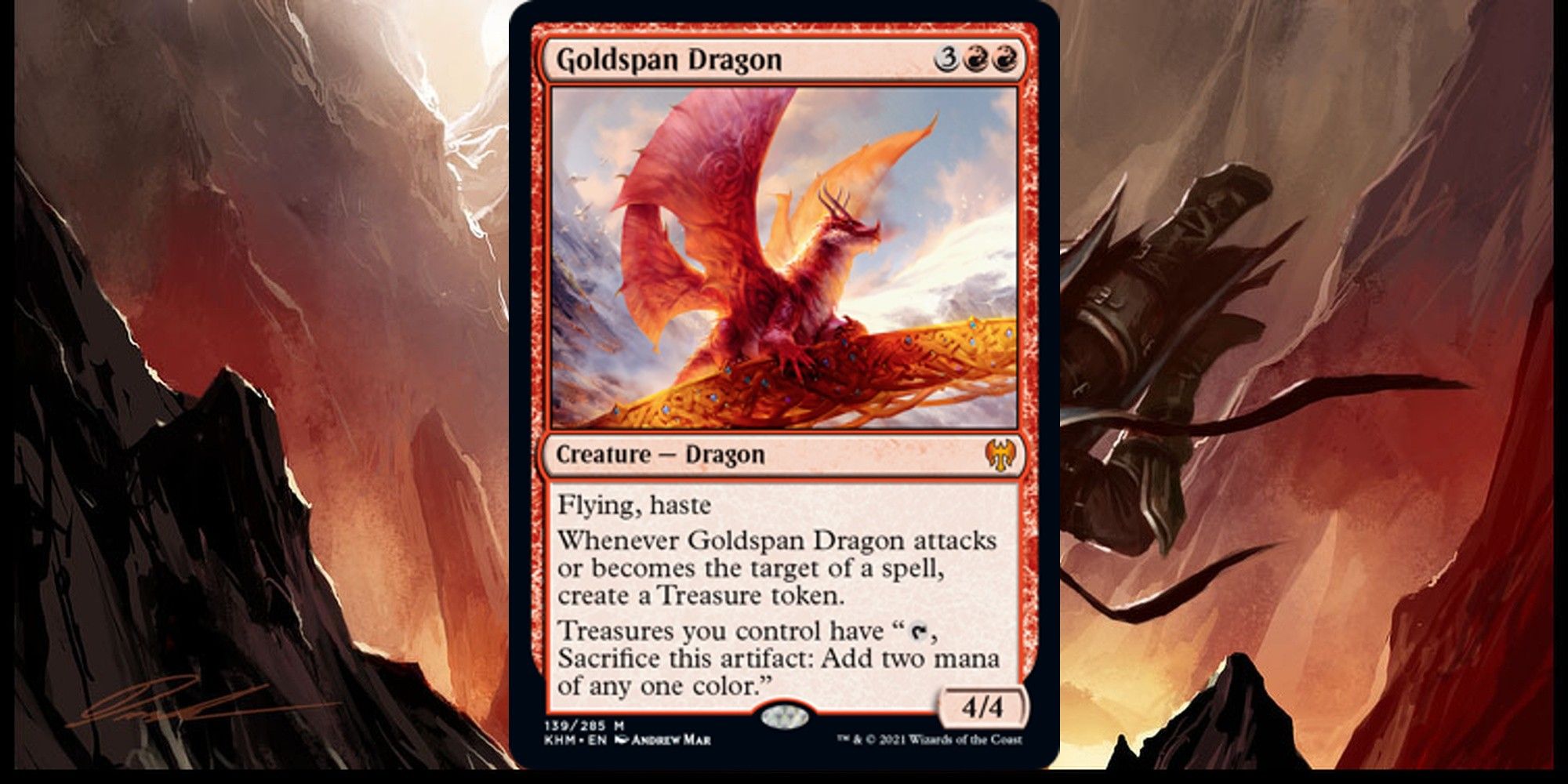Standard rotation for Magic: The Gathering means the loss of four Standard legal sets. Kaldheim is one such member of the graduating class; however, the set left its mark on Standard in a less than ideal manner.
After all, the printing of Alrund's Epiphany eventually led to the de facto dominant decks running as many copies of the card as possible, and seeking to go effectively infinite on turns to instantly win the game. Thankfully, Alrund's Epiphany was banned from Standard. Despite the grievance of Alrund's Epiphany, Kaldheim still introduced a number of other memorable cards which will be sorely missed.
10 Blood On The Snow
Blood on the Snow was a key card in Mono-black Control strategies that allowed them to simultaneously wipe the board and present a game-ending threat, all for four generic and two black mana.
Furthermore, thanks to the presence of Treasure tokens from cards like Shambling Ghast and Deadly Dispute, Blood on the Snow could come down as early as turn four. The most common play was to use this sorcery to reanimate Lolth, Spider Queen, who then instantly dropped two spiders onto the battlefield. Talk about a swing.
9 Doomskar
The foretell mechanic is likely the most memorable mechanic from all of Kaldheim, if not partly because it was featured on the notorious Alrund's Epiphany. That aside, Doomskar is arguably the second-best card to have foretold.
Four mana for wraths (board wipes) is the rate that this effect is playable at in Modern (looking at you Supreme Verdict), so it made for a very effective card in Standard. The only problem was that foretelling Doomskar often telegraphed that you were about to wipe the board, which made it much easier for aggressive opponents to fight against.
8 Runeforge Champion
Runeforge Champion wouldn't be notable at all, were it not for its partner in crime: Jukai Naturalist. With both of these cards in play, enchantment rune cards became completely free to play, thanks to them only originally costing two mana.
Pair this with the fact that enchantment runes cantrip (draw a card) each time you play them, and you've got an engine for drawing tons of cards and swinging in with a lifelink, haste, and trample creature of impressive size. The deck came to be called Naya Runes and saw considerable success before opponents got wise of the general strategy.
7 Binding The Old Gods
Say hello to every ramp (fast mana) player's favorite toy. Binding the Old Gods is expensive as far as removal is concerned, but it makes up for this by soon adding a land to the battlefield. This was a key card for control decks that used Emergent Ultimatum to search up three cards that nearly always won the game: Valki, God of Lies, Vorinclex, Monstrous Raider, and Kiora Bests The Sea Gods.
Nowadays, Binding the Old Gods doesn't have a great card to ramp up to, but it's still quite memorable for its days in the oppressive Emergent Ultimatum decks.
6 Koma, Cosmos Serpent
Koma, Cosmos Serpent is a card that's most memorable for its role as the control breaker. This wily Serpent was most common in the sideboard of control decks as a silver bullet for taking out other control players.
Koma's immunity to counterspells, endless stream of Serpent tokens, and ability to sacrifice them for indestructibility made it impossible to stop from coming down and necessary to answer immediately. Otherwise, only exile effects could save you from its endless progeny.
5 Frost Bite
Frost Bite is the closest thing to Lightning Bolt Standard has had in some time. Of course, there's Wizard's Lightning, but the deck-building cost of playing mostly Wizard creatures is arguably more debilitating than playing snow lands.
It's cards like Frost Bite that make Mono-red such a reliable strategy rotation after rotation, and it wouldn't be surprising to see Dominaria replace Frost Bite with a similarly powerful and cheap red removal spell. Fingers crossed for Lightning Bolt to make a Standard return.
4 Magda, Brazen Outlaw
Magda, Brazen Outlaw saw a lot of play upon release; however, she seemed to have been eventually relegated to lower-tier decks in the meta, capable of doing janky, multicolor shenanigans. Although, she did see some success again in builds of Jund, including Ziatora, the Incinerator shortly after the release of Streets of New Capenna.
Magda will mostly be remembered as a multicolor enabler. Though, her card might as well not have mentioned the sacrifice of five Treasure tokens to search your library for an artifact or Dragon card. Honestly, it's rare to witness it activated even once. Nonetheless, this is a memorable card that could definitely see inclusion in a tribal Dwarves deck.
3 Blizzard Brawl
This is a card that near single-handedly brought Mono-Green Aggro to the top of the Standard meta for many months. Of course, it had some help from other Kaldheim notables like Sculptor of Winter and Old-Growth Troll. However, Blizzard Brawl is arguably the most important card in the deck, allowing Mono-green to curve out creature after creature while still having some removal and protection available.
Blizzard Brawl was especially good against other creature-based strategies and incredibly frustrating to play against when you're trying to remove opposing creatures, as it could easily result in a two-for-one trade against you. Not only would Blizzard Brawl provide the removal target with indestructible, thus blanking your removal, it also removed one of your own creatures thanks to its fight clause.
2 Esika's Chariot
Aside from Goldspan Dragon, Esika's Chariot is arguably the most exploited card on the list. The Chariot's ability to copy creature tokens other than the cats it created could quickly lead to out-of-control board states when properly set up. Additionally, the fact that it created tokens for it to copy in the first place made it an all-inclusive package.
Furthermore, Chariot allowed you to use creatures that had just entered the battlefield as crew fodder for activating it, effectively giving your creatures pseudo haste. Altogether, Esika's Chariot was simply a powerful Magic card that many green players will be sure to miss.
1 Goldspan Dragon
Goldspan Dragon's ability to produce Treasure tokens when it attacks, coupled with haste, make it a mana-producing engine. Combine that with the fact that targeting it also produces a Treasure token for its controller, and you've got a card that produces guaranteed value.
There's also the additional perk that Goldspan Dragon lets your Treasures produce twice as much mana. As a result, resolving a Goldspan Dragon and using its Treasures for protection in the form of a Negate, Disdainful Stroke, or other counterspell, has been a common strategy. Just as good is sacrificing the Treasures to cast cheap removal, or saving them for the following turn to ramp out a huge threat. All this goes without mentioning that a Dragon creating and getting value from Treasure is incredibly favorable. Whatever your favorite use for it, Goldspan Dragon has been the gift that keeps on giving.

-by-Rudy-Siswanto-AND-Komas-Coil-Token-by-Simon-Dominic.jpg)
